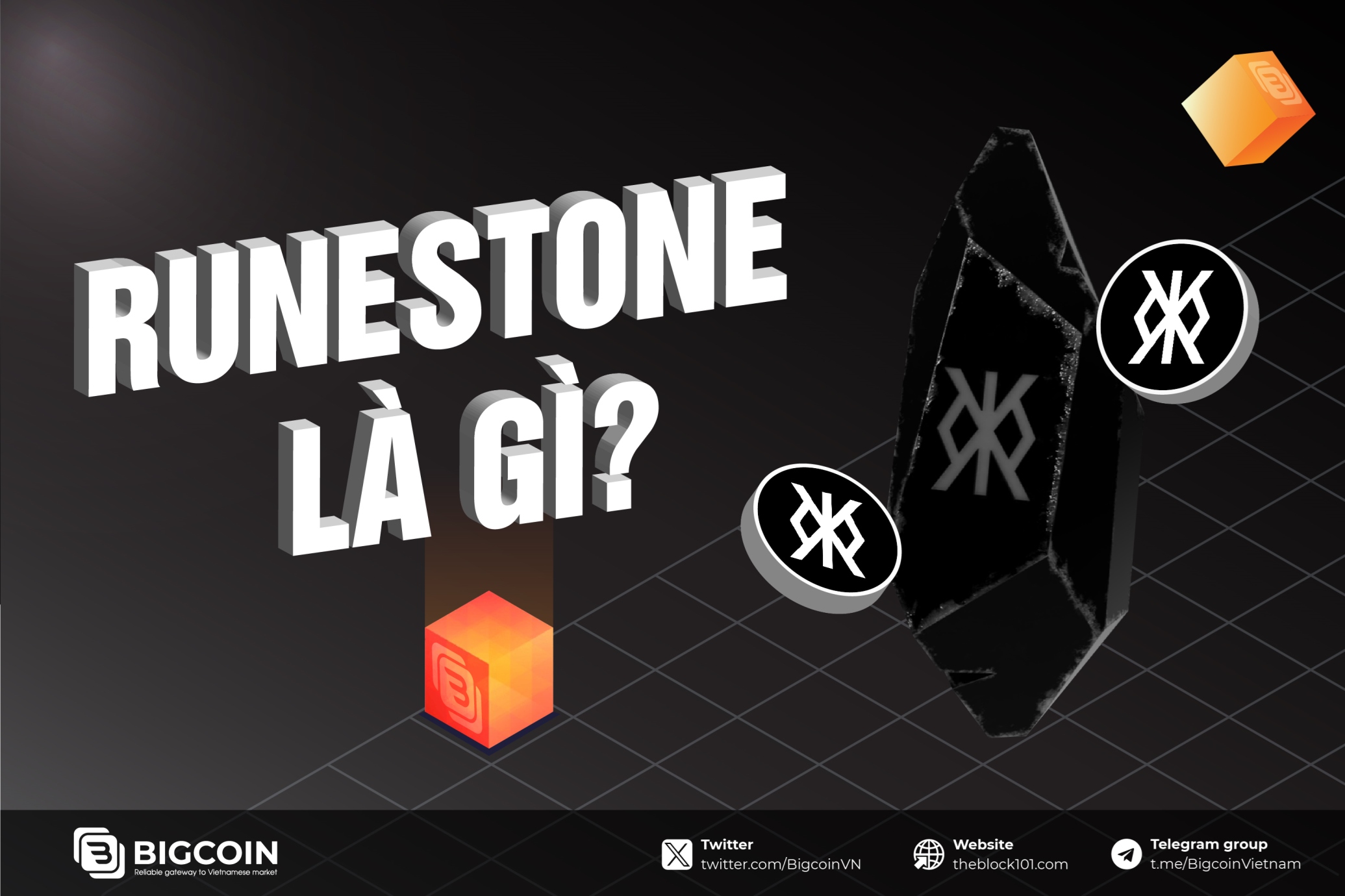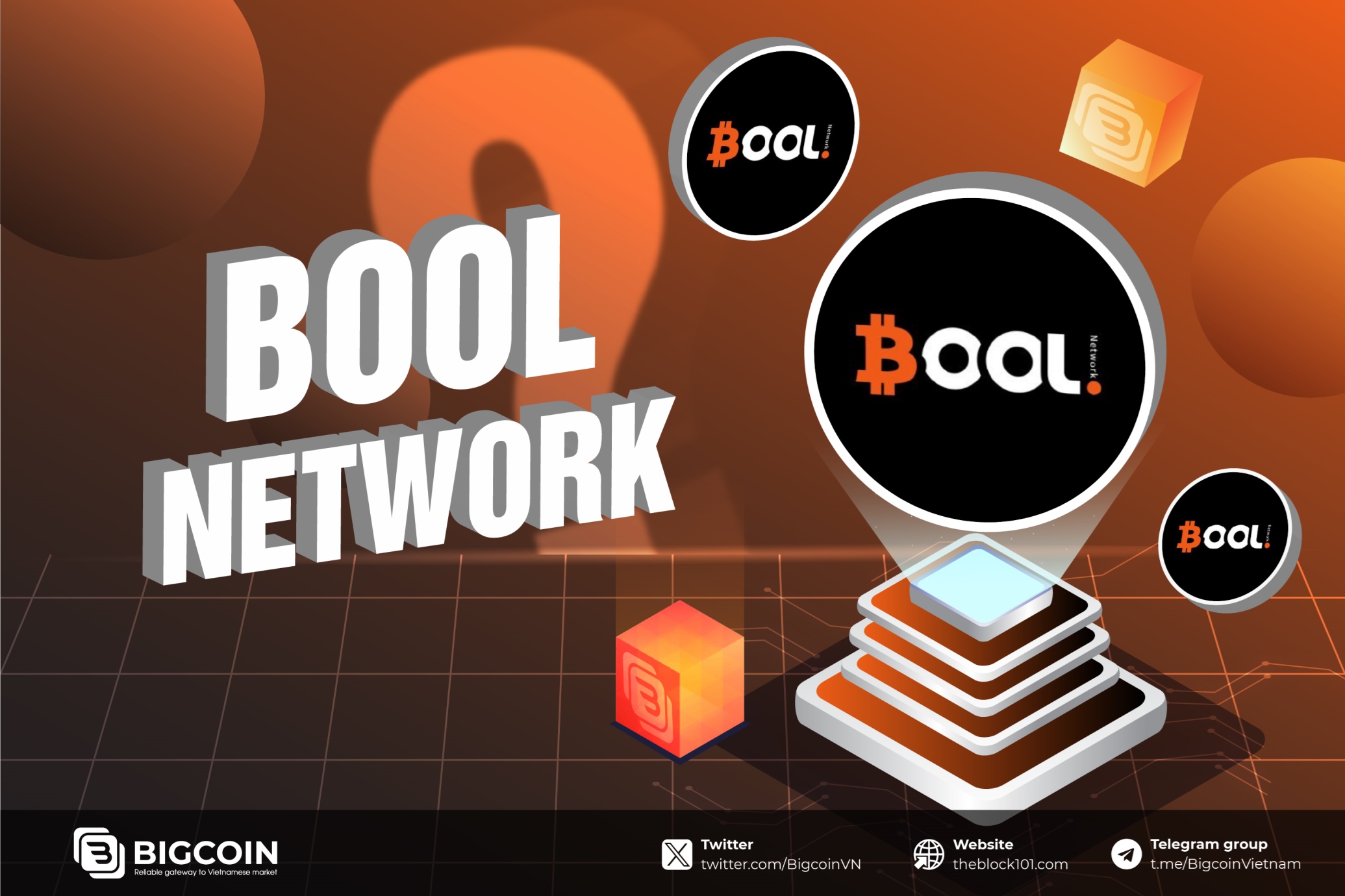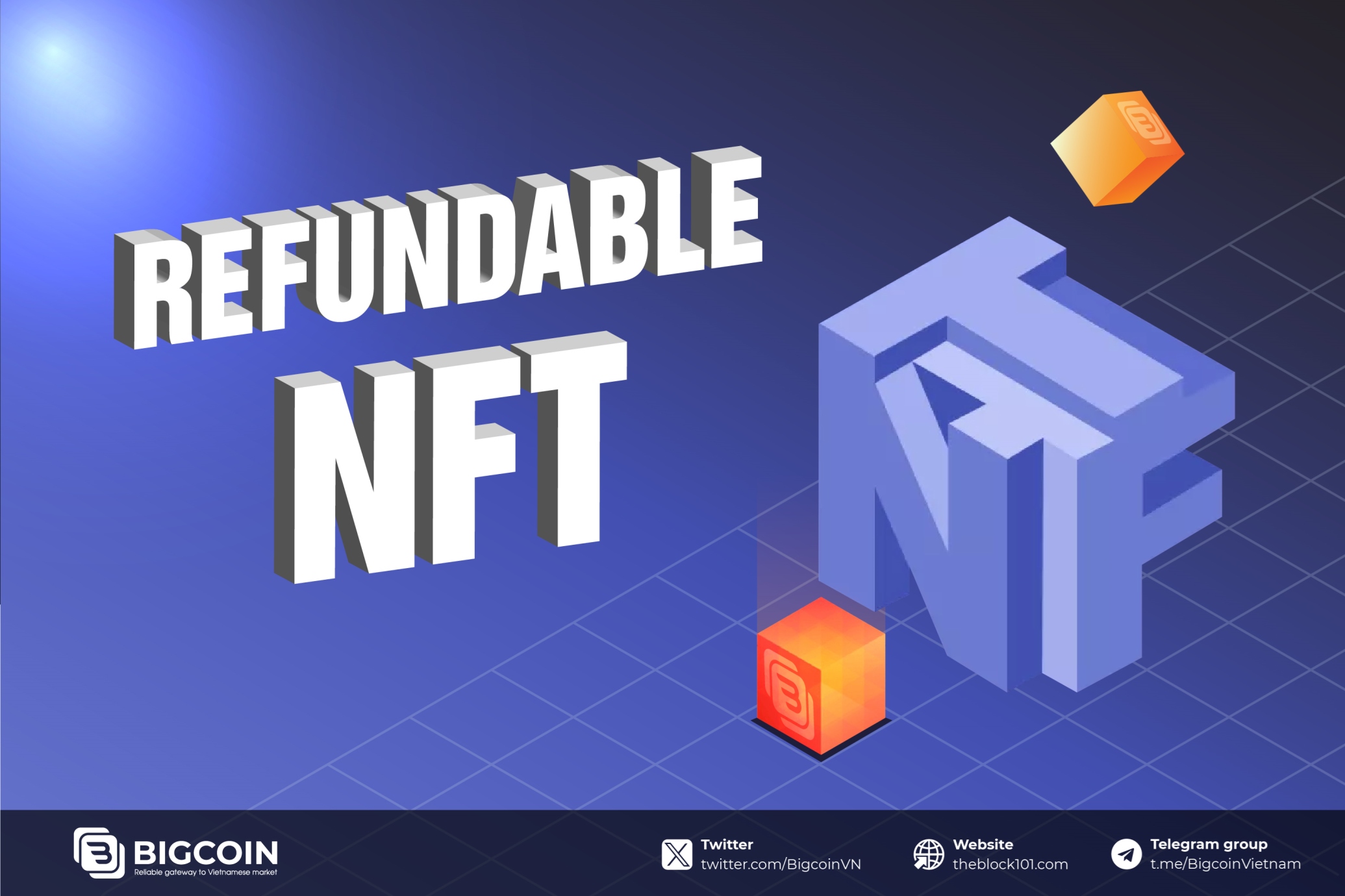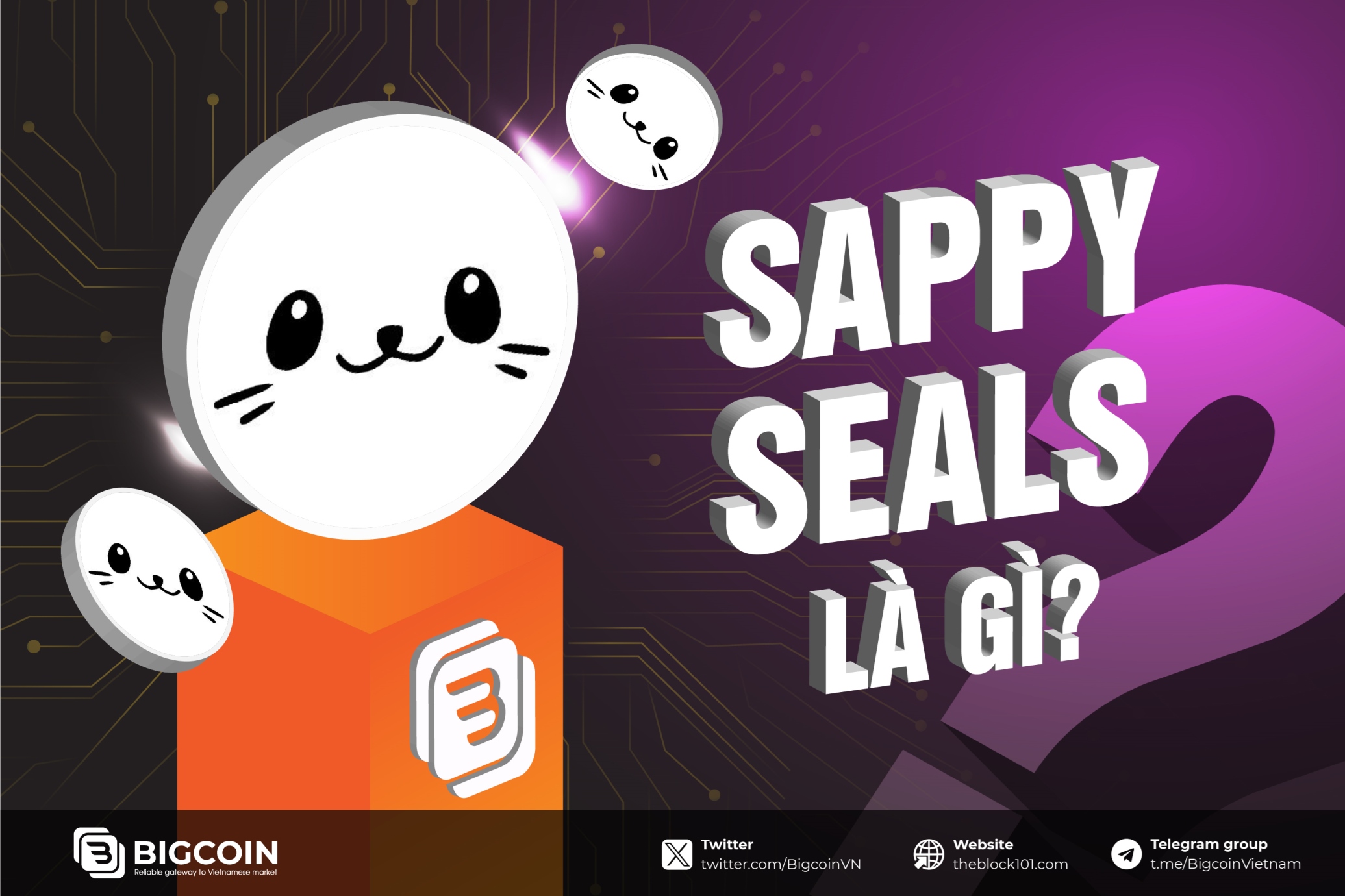1. What is NFT? Some Aspects About NFTs
1.1. What are NFTs?
NFT is the acronym for Non-Fungible Token . When separated from each word, Fungible translates into Vietnamese as replaceable. The opposite of Fungible is Non-Fungible, which means irreplaceable.
Thus, overall, Non-Fungible Token means a non-fungible token that acts as a proof of authenticity and ownership in the digital realm.
To better understand the concept of NFT, see the real-life example below:
-
A has one Bitcoin, B also has one Bitcoin ; Then A and B can exchange Bitcoins with each other because they have the same properties. In this case, Bitcoin is called Fungible Token.
-
In terms of NFTs, imagine Ronaldo owning a golden ball honoring his achievements after an outstanding season. This golden ball is unique and irreplaceable. The nature of NFT is similar but it is on a digital platform and cannot be counterfeited.
So to explain in a more academic and technical way the question of what an NFT is, an NFT or non-fungible token, is a type of digital asset that represents ownership or certifies the uniqueness of a target. or unique content.
Unlike cryptocurrencies like Bitcoin or Ethereum, which are peer-to-peer and can be exchanged one-to-one, NFTs are separate assets and cannot be exchanged the same way.
1.2. How are NFTs created? Why is it unique?
In terms of structure, NFTs are often built on blockchain technology . There are many blockchains that can be applied to create NFTs but Ethereum is the most popular.
Blockchain acts as a decentralized ledger that records and verifies ownership, transaction history, and authenticity of NFTs. This allows to ensure the uniqueness of each NFT. Basically, NFTs include the following elements:
- Metadata: Metadata is descriptive information about the NFT, including name, description, image, video, audio, author information, creation date, and any other related information. Metadata is stored in blockchains or distributed storage systems.
- Unique Identifier: Each NFT has a unique identifier that distinguishes it from other tokens. This identifier can be created using a hash of the NFT's components or using another special method to create a unique string of characters.
- Smart Contract: An important part of NFTs is smart contracts, especially when using a blockchain platform like Ethereum. Smart contracts govern the issuance, transfer, and ownership management of NFTs. It defines the rules and conditions that the NFT will comply with.
- Blockchain: NFTs are typically created and stored on blockchains, such as Ethereum, Binance Smart Chain, Flow, or other blockchain platforms. Blockchain ensures the integrity and immutability of NFT information, as well as tracking of NFT ownership and transactions.
Thanks to this structure, NFTs can represent many different types of digital or physical assets, including works of art, music, videos, virtual real estate, collectibles, and memorabilia. in-game and more.
Note: The value of an NFT largely depends on the demand and perceived value of buyers and collectors. Owning an NFT gives the buyer exclusive ownership of that specific digital target, along with the ability to transfer or sell it to others.
1.3. How did NFTs come into being?
The concept of NFT was born in 2009, however, it was not until 2012 that NFT first appeared with the name Colored Coin created by Yoni Assia. At that time, this technology was not yet interested and known by many people.
It wasn't until 2017 that this term really became more widely known through the game Crypto Kitties - a game built on the Ethereum network that allows players to collect, breed and exchange virtual cats.
Since then, other NFT projects and platforms have emerged and grown. Platforms like OpenSea, Blur, MagicEden, Rarible, and Foundation have become popular destinations for creating, buying, selling, and collecting NFTs.
How NFTs were born
1.4. What are the characteristics of NFTs?
NFT has 6 main characteristics, making it one of the digital assets with high growth potential and attracting the attention of a large segment of society, from the government, private sector to ordinary people. Specifically, NFTs have the following 6 major characteristics:
- Non-fungibility: NFTs are non-fungible tokens that have unique value and cannot be altered by similar entities. Each NFT has a unique identifier and carries unique information about authenticity and ownership.
- Diversity and flexibility: NFTs can represent a variety of digital assets, including art, music, videos, photos, games, even physical assets such as real estate and rare products .
- Recorded on the blockchain: Every transaction and information about NFTs is recorded on the blockchain, ensuring transparency, authenticity and immutability.
- Ownership and copyright: NFTs allow the owner of a digital asset to control and transfer its ownership. This creates the ability for artists and creators to protect and capitalize on the value of their work.
- Value integration: The value of NFTs is determined by the market and availability. NFTs can be bought, sold, auctioned, and exchanged on NFT exchanges, creating a marketplace for digital assets.
- Interactivity and collectability: NFTs allow users to interact with the work and create unique experiences. Artists and creators can develop collectible projects and integrate special rewards or benefits for NFT holders.
2. What are the similarities and differences between cryptocurrencies and NFTs?
2.1. What do cryptocurrencies and NFTs have in common?
In general, NFTs and cryptocurrencies are both applications of blockchain technology, so they have many similarities, specifically:
-
Hosted on blockchain technology: Blockchain provides a decentralized, secure and immutable system that allows for the confirmation and recording of NFT and cryptocurrency transactions.
-
Convertible to cash: Although NFTs and cryptocurrencies are not an actual currency, some exchanges allow users to exchange NFTs for cryptocurrencies and for cash through auctions or trade directly.
-
Needs user community attention and participation: Both asset classes can create value and gain attention from users, investors, and creators. The value of the two types of assets also depends largely on the community.
2.2. What is the difference between cryptocurrency and NFT?
Besides similar characteristics, NFTs and cryptocurrencies also have many differences, for example:
-
In terms of nature: Cryptocurrencies are units of relative value like Bitcoin or Ethereum, capable of being replaced and of equal value. however, NFTs are unique and non-fungible units. Each NFT has its own digital signature, representing its uniqueness and distinct ownership.
-
Intended use: Cryptocurrency is used as a means of transaction and store of value. Users can use cryptocurrency to purchase goods, services or investments. NFTs are often used to represent ownership of a unique digital asset.
-
Origin of value: The value of cryptocurrencies is typically market-based and determined by supply and demand. The value of NFT depends on the uniqueness and interest of the buyer. Factors such as rarity, famous author, or unique dedication can increase the value of an NFT.
3. How do NFTs work?
To understand how NFTs work, you need to understand the technology and mechanism of NFTs. So what is the technology of NFT? How does the mechanism work?
3.1. Technology
As TheBlock101 said above, the technology of NFT is blockchain technology. Specifically, NFTs are often created on blockchain platforms such as Ethereum, Binance Smart Chain, Flow, and many other blockchain platforms.
Specifically, information about NFTs is recorded into a new block in the blockchain through a process called "minting". This process typically involves using smart contracts ( smart contracts rel=”nofollow”) to assign ownership and manage the transferability of the NFT.
Each NFT set will be managed on a common smart contract of that NFT set, which is also the address of the NFT set. Each NFT in this NFT set will be assigned a unique ID token. Thanks to this ID token, users can control the authenticity and uniqueness of that NFT.
In short, thanks to blockchain technology, NFTs achieve transparency, immutability, and integrity. This technology also allows for clear ownership, traceability, and transaction history tracking of each NFT in a secure and reliable way.
3.2. Mechanism of action
The above technology can be quite confusing if you are new to the blockchain field. To better understand what NFT technology is, you need to understand how NFT works. This mechanism includes 4 steps:
- Step 1: Minting : This process is the process of creating a new NFT and recording its information on the blockchain. After this process, a new block is created on the blockchain, the NFT information is validated and recorded in that block. Typically, the process of creating new NFTs is accompanied by the use of smart contracts to manage the ownership and unique nature of the NFT.
- Step 2: Ownership and transactions: Each NFT set is assigned an address in the blockchain to identify that NFT set. In that set of NFTs, each NFT owns a different IP. Information about the NFT's ownership is publicly recorded on the blockchain. For example, BAYC has 10,000 NFTs sharing a common address, each NFT in BAYC will own a private IP from 1 to 10,000. NFT ownership and transferability policies are regulated by smart contracts . NFT owners can transfer NFTs to others through a transaction process on the blockchain.
- Step 3: Authentication and integrity: The blockchain mechanism ensures the integrity and immutability of NFT information. Each transaction and information about NFTs is confirmed and stored on multiple network nodes in the blockchain system, ensuring that information about NFTs is not changed or lost.
- Step 4: Traceability and authentication: With blockchain technology, traceability and authentication of an NFT becomes easy.
Each NFT is associated with detailed information about its origin, such as its creator, previous transaction history, and related information. NFT owners can check and authenticate the origin of the NFT through data recorded on the blockchain.
3.3. Example of mechanism of action
Still feeling "a bit of a headache"? So let TheBlock101 give you an easy-to-understand example!
Let's say you're a virtual artist and you've created a unique digital painting called "The Digital Cosmos". Here is an example of how NFTs could be applied to this work of art:
- Minting: You create an NFT for the painting "The Digital Cosmos" on a blockchain network, such as Ethereum. Each NFT is assigned a unique identifier and contains information about the work's title (The Digital Cosmos), a description, a high-quality image of the painting, and your name as the artist.
- Ownership and trading: You decide to sell this NFT through an NFT exchange. An art lover A buys your NFT with cryptocurrency. The transaction is made on the blockchain and the new ownership information recorded is that art lover A.
- Authentication and integrity: Data about the work "The Digital Cosmos" and ownership of A are stored on the blockchain, which cannot be changed or edited. This ensures the integrity of the information and that buyer A has proof they are the rightful owner of this work of art.
- Value and appreciation: The painting "The Digital Cosmos" can be considered a collectible work of art. If the work is highly appreciated and attracts interest, the value of the NFT may also increase over time.
This buyer A can then transfer or resell the NFT to someone else, and information about these transactions will be recorded on the blockchain.
- Traceability and authentication: Anyone interested in "The Digital Cosmos" painting can view detailed information about the NFT on the blockchain. They can verify that the work is genuine, unaltered, owned, and created by you as a reputable artist.
4. Applications of NFTs
In recent times, there has been much speculation about blockchain applications of non-fungible tokens. NFTs can ensure exclusivity for the owner. So, NFTs will have an infinite growth potential ahead, leading to an increase in use cases in the future.
However, at present, NFT has also brought many benefits to businesses that apply blockchain. Let's learn more about the applicability of NFT through a few aspects below:
4.1. For art
Surely everyone has heard about the $69 million NFT?
In October last year, digital artist, Beeple sold an NFT for $69 million at Christie's auction. This event created a strong wave throughout the blockchain world, causing the buzz of NFTs to spread more and more.
It can be said that digital artworks are one of the most popular use cases of NFTs, providing the perfect combination of creativity and technology.
As of now, you can find a lot of limited edition works of art circulating on various NFT marketplaces.
4.2. For educational activities
NFTs can be beneficial in verifying licenses and certificates. In fact, universities and employers often request copies of course completion documents as references before they offer a position in a company or any organization.
Talking about the applicability of NFT in the field of licenses and certificates, it is impossible not to mention the TomoChain project. Vietnam's Ministry of Education and Training has joined forces with TomoChain to launch a diploma storage and security platform.
Millions of high school, college, university certificates as well as foreign language and information technology certificates from 2018-2020 have been uploaded to the system; helps eliminate the burden and save time in manually checking and verifying records.
4.3. For video games
Surely you have heard of famous games like League of Legends before. These games all have unique characters, weapons and moves (collectively referred to as objects).
The application of NFTs in blockchain games is similar. Each NFT can be a character - a move or weapon in the game.
Axie Infinity is a prime example. This is a leading game in the gaming to earn money movement in 2021-2022. Players of blockchain games can earn profits in the form of tokens or various rewards
Tokens can be used in-game or traded on the open market if others choose to exchange.
In addition to Axie Infinity, the NFT application in the game can be called CryptoKitties - a game revolving around creatures that can be bred and collected.
4.4. For collecting activities
Collectibles are also one of the use cases of NFTs. In 2017, the online collectible Cryptokitties emerged as one of the first NFT collectibles.
To date, a series of other NFT collections have appeared with not only more eye-catching looks but also more interesting functions, such as BAYC, Degod, Azuki,...
4.5. For sports (NBA Topshot)
Counterfeit tickets and counterfeit goods are among the key issues for the sports industry. Therefore, blockchain is the perfect choice to solve these problems. The immutable nature of blockchain technology will help combat the problems of counterfeit tickets and collectibles.
NFTs in sports are also very developed
Sports NFTs are also becoming a trend, with many athlete-related publications being successfully tokenized. Top Shot here is an example, where fans can buy, sell and trade the most special moments of NBA players.
It can be said that technology can encode all items into NFTs. For example, a landscape painting, a piece of land or a piece of music from artists around the world.
5. Top 5 Simple and Effective Ways to Own NFTs
There are many ways to earn NFTs, but TheBlock101 wants to remind you that earning NFTs also requires effort, research, and risk. Before participating in any activity, be clear about the risks and ensure you understand the process and community surrounding NFTs.
5.1. Create NFTs from your creative assets
If you are skilled in creating digital content, such as paintings, photos, music, videos or games, consider creating an NFT of your creative assets. You can use NFT platforms like OpenSea, Rarible or Foundation to mint and sell your NFTs.
5.2. Join the NFT exchange
Some NFT exchanges allow users to earn NFTs through participating in activities such as buying, selling, auctioning, or participating in events. By following trends and learning about unique works of art, you can find and purchase NFTs at lower prices and then resell them at higher prices.
5.3. Join the NFT rewards program
Some NFT projects offer rewards for user participation, such as completing tasks, referring friends, or contributing to the community. By participating in these activities, you can receive free or valuable NFTs.
5.4. Participate in NFT-based games and applications
There are a number of games and applications built on NFT platforms, where users can earn and own NFTs through participation in the game or application.
For example, Abyss World - a AAA game NFT project backed by Microsoft, AMD, Apic Games and IGN. Through playing this game, you can earn AWT - the project's token.
5.5. Create and sell exclusive content
If you are a content creator, you can create exclusive content or a limited edition of it and sell it as an NFT. For example, famous artist Beeple created a piece of art every day for 13 years and then sold it as an exclusive digital painting as an NFT for millions of dollars.
6. Reputable NFT Marketplaces
To be able to earn money from NFTs, you will definitely need to know reputable markets to conduct NFT exchanges. Below are some reputable NFT marketplaces along with short descriptions, advantages, and disadvantages of each.
Please refer and choose the market that best suits you!
6.1. OpenSea
OpenSea is one of the largest and most popular NFT marketplaces today. It allows users to buy, sell, and exchange NFTs from a variety of digital assets.
Pros: OpenSea has a large amount of NFTs available and support for multiple blockchains, giving users access to a wide variety of assets and options.
Cons: With the large number of NFTs on the platform, searching and sorting can become difficult, and some unreliable or fake NFTs may exist.
5.2. Blur
Blur NFT Marketplace is a popular NFT (Non-Fungible Tokens) trading and exchange platform on the Internet. Founded in 2022, Blur has quickly attracted attention and become one of the leading NFT marketplaces on the market.
Advantage:
-
Fast and easy transactions: Blur offers an intuitive and easy-to-use user interface along with fast transaction speeds.
-
NFT Diversity: Blur boasts a rich diversity of NFTs from different fields, including digital art, gaming, music, movies and sports.
-
High standards: Blur filters and moderates NFTs before posting to the platform, ensuring legality and quality.
-
Popular Blockchain Support: Blur supports popular blockchains such as Ethereum and Binance Smart Chain, giving users many options when trading NFTs.
Cons: A common problem in the NFT space is the increase in transaction fee prices on blockchains. Trading on Blur can incur significant fees, especially when participating in auctions or purchasing high-value NFTs
6.3. Magic Eden
Magic Eden NFT Marketplace is a popular and notable NFT trading platform in the market. With its launch in 2021, Magic Eden quickly attracted the interest of the NFT community and became a popular destination for users to buy, sell, exchange, and create NFTs.
Advantage:
-
NFT Creation Feature: Magic Eden provides a powerful set of tools for users to create and issue their own NFTs.
-
Rich ecosystem: Magic Eden integrates with many popular blockchains such as Ethereum and Binance Smart Chain.
-
Community Interaction: Magic Eden creates a powerful interactive space for the NFT community. Users can participate in forums, discuss with each other, and share knowledge about NFTs.
-
High security: Magic Eden puts user safety and data security first.
Cons: Like other NFT marketplaces, Magic Eden also has problems with high transaction fees on the blockchain, especially in a popular network like Ethereum.
7. Frequently Asked Questions
What are NFTs?
NFT, or non-fungible token, is a type of digital asset that represents ownership or certifies its uniqueness and cannot be copied.
Can NFTs be copied or duplicated?
NFTs are built on blockchain technology, which ensures NFTs are unique and non-replicable. Each NFT has a unique identifier, and the NFT's information is recorded on the blockchain.
Can I own part of an NFT?
An NFT is an individual unit and cannot be broken down into smaller parts. When you own an NFT, you own the entire asset and cannot divide it into individual elements. However, you can own many different NFTs and manage them in your wallet.
Where can I keep up with the latest NFT news?
You can update through channels specializing in cryptocurrencies such as TheBlock101's monthly NFT newsletter or VnExpress's NFT news channel .
8. Conclusion
Overall, NFTs have opened a new door to the world of digital assets. By creating irreplaceable and uniquely valuable assets on the blockchain, NFTs have brought about a significant change in the way we own, exchange and enjoy assets in the digital world.
Above is all the information for the question "What is NFT". TheBlock101 hopes it is useful to you!
Read more

 English
English Tiếng Việt
Tiếng Việt
















